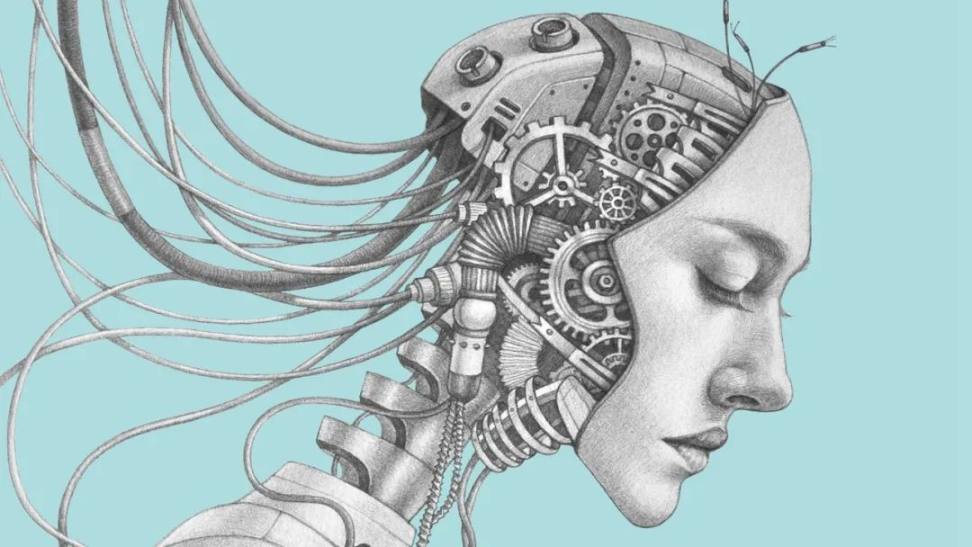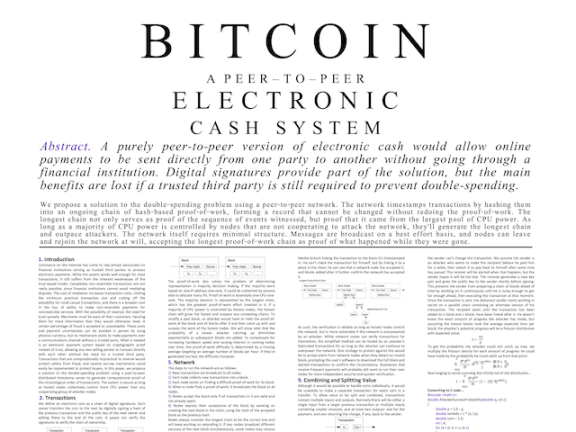We look forward to the day when we can jointly build a more open, inclusive, and secure digital world.
Written by: Lyon
Introduction
In 1994, renowned American writer and entrepreneur Kevin Kelly delved into the intersection of technology, nature, and human society in his seminal work "Out of Control," exploring how these intersections shape our understanding of control, complexity, and evolution.
In this book, he prophetically pointed out that when ordinary people begin to master the codes and encryption technologies once thought to be unfathomable, their most significant achievement may be the birth of electronic currency.
With the dawn of the digital age, a group of forward-thinking tech experts, self-identified as cypherpunks, not only understood the profound impact of the internet on human society but also laid a solid foundation for freedom and privacy rights in the digital age through their unique perspectives and actions.
I. The Birth of Cypherpunks
The birth of the cypherpunk movement was a collective awakening to individual rights in the digital world.
In 1992, Timothy May, a former senior scientist at Intel, typed the historically significant last line of code, giving birth to the crypto-anonymous mailing list.
This platform quickly attracted over 1,400 geeks who anonymously exchanged ideas, shared knowledge, and discussed how to achieve freedom of expression and privacy protection in the digital world.
Among these geeks were figures who would later have a significant impact on the internet, such as Tim May, John Gilmore, and David Chaum. Their work and ideas injected powerful momentum into the cypherpunk movement, as they shared their research findings and viewpoints through emails, conferences, and publications, exploring the applications of encryption technology in protecting personal privacy, promoting freedom of speech, and preventing government overreach.
II. The Development and Evolution of Punk Spirit
The punk spirit originated in the UK in the 1970s, initially emerging as a music and cultural phenomenon that quickly gained global popularity with its rebellious and traditional-challenging stance. This spirit not only showcased its unique style in music but also rapidly expanded to various cultural and social dimensions, influencing the lifestyles and ideologies of young people.
Cyberpunk, as an extension of the punk spirit in the tech realm, profoundly reflected and explored human nature and social issues in a highly digitized society through literature, film, and art. Cyberpunk works often depict a high-tech yet low-living standard future world, where technological advancements do not bring about the anticipated utopia but instead exacerbate social inequality and alienation.
In literature, William Gibson's "Neuromancer" is one of the representative works of the cyberpunk genre. This novel portrays a future world controlled by multinational corporations, where information networks and virtual reality technologies are highly developed, yet social order is chaotic, and personal privacy is nearly nonexistent. This work not only challenges blind optimism about technological progress but also stimulates thoughts on digital freedom and privacy protection.

The emergence of cyberpunk films, through visually stunning effects and profound thematic explorations, showcases the moral and philosophical issues that technological development may bring. For instance, "Blade Runner" explores the essence of artificial intelligence and humanity, while "The Matrix" directly presents a virtual reality world controlled by machines, where humans lose their free will.
Cyberpunk-style artworks typically employ cool tones, futuristic urban imagery, and high-tech elements to create a unique visual style. These works often carry strong social critique, reflecting artists' concerns about modern society and technological development.
The common dystopian themes in cyberpunk works not only challenge blind optimism about technological progress but also stimulate thoughts on digital freedom and privacy protection.
III. Breakthroughs in Encryption Technology
At the core of the cypherpunk movement is the exploration and application of encryption technology.
The birth of PGP (Pretty Good Privacy) encryption software in 1991 marked a significant breakthrough for cypherpunks in the tech field. PGP was developed by Philip Zimmermann, a visionary programmer who recognized the importance of encryption technology in protecting personal privacy and promoting digital freedom. The emergence of PGP not only greatly enhanced the security of information transmission but also facilitated the popularization and application of encryption technology.
The design philosophy of PGP is "good enough," meaning its encryption strength is sufficiently secure for ordinary users, effectively preventing unauthorized access and eavesdropping. The launch of PGP allowed encryption technology to move from the exclusive domain of military and government institutions to the mass market, enabling ordinary users to protect their communication security.
Through PGP, cypherpunks demonstrated their firm commitment to protecting personal privacy in the digital world. They believe that everyone has the right to protect their communications from unauthorized third-party eavesdropping or tampering. The successful application of PGP proved the immense potential of encryption technology in safeguarding personal privacy.
At the same time, the popularization of PGP sparked widespread discussions globally about the potential and impact of encryption technology. Governments and regulatory bodies began to pay attention to the challenges posed by the proliferation of encryption technology, such as the possibility of criminals using it for illegal activities. This led to restrictions on encryption technology in some countries and even sparked legal and ethical debates about encryption technology.
Members of the cypherpunk movement not only achieved breakthroughs in technology but also actively participated in these debates, advocating for the legality and necessity of encryption technology.
They argue that encryption technology is an essential tool for protecting personal freedom and privacy and should not be restricted due to the misuse by a minority.
IV. Bitcoin: A New Era of Digital Currency
Under the ideology and technological support of cypherpunks, the birth of Bitcoin marked the beginning of the digital currency era.
In 2008, a paper titled "Bitcoin: A Peer-to-Peer Electronic Cash System," authored by Satoshi Nakamoto, was published on the cypherpunk mailing list, proposing a decentralized electronic currency system. This paper explained how Bitcoin works, cleverly addressing the double-spending problem and allowing transaction verification without a central authority.

The double-spending problem refers to the risk of the same funds being spent twice without central oversight. Satoshi Nakamoto solved this issue by introducing a public ledger—blockchain. Each block contains a series of transaction records, and these blocks are linked together using cryptographic methods, forming an ever-growing, immutable chain of transaction records. Every participant in the network can verify the legitimacy of transactions, ensuring that each Bitcoin can only be spent once.
The decentralized nature of Bitcoin means there is no single control center or issuing authority; anyone with an internet connection can participate in the Bitcoin network. Users can create new Bitcoins and verify transactions by solving complex mathematical problems (mining). This process not only ensures the security of the network but also provides economic incentives for participants.
The birth of Bitcoin attracted widespread attention and discussion. It not only provided new possibilities for digital currency but also offered a new avenue for the cypherpunk pursuit of free trade and privacy protection. Its anonymity and decentralized characteristics make it an ideal choice for those seeking to avoid government regulation and financial scrutiny.
The success of Bitcoin also spawned thousands of other cryptocurrencies, creating a vast cryptocurrency market.
V. Blockchain Technology: An Extension of Cypherpunks
Blockchain technology, as the core technology of Bitcoin, is a natural extension of cypherpunk ideology. By constructing a distributed ledger, it ensures the transparency and immutability of all transactions, thereby establishing trust without a central authority. This mechanism not only solidifies the operation of digital currencies but also gives rise to innovative applications such as supply chain management and smart contracts.
In supply chain management, blockchain provides a method to ensure that every step of a product's journey from source to consumer is traceable and verifiable, enhancing transparency and helping to prevent counterfeiting. Smart contracts program the terms of contracts onto the blockchain, making contract execution automatic and transparent.
Moreover, the application of blockchain technology is not limited to finance and supply chains; it also extends to copyright management, identity verification, and voting systems.
It offers a decentralized approach to protect intellectual property, verify identities, and ensure the fairness of elections. The development of blockchain technology showcases the cypherpunk pursuit of building a more open, transparent, and fair digital world.
VI. The Spiritual Legacy of Cypherpunks
Although the cypherpunk movement has become a thing of the past, its spirit and ideology continue to have a profound impact on today's society.
It has driven the rise of cryptocurrencies and blockchain technology, which have not only revolutionized the fintech sector but also demonstrated immense potential in data privacy protection, decentralized autonomous organizations (DAOs), and smart contracts.
The pursuit of freedom, privacy, and innovation by cypherpunks has provided the theoretical foundation and technical support for cryptocurrencies. The emergence of digital currencies like Bitcoin allows individuals to directly control their funds without relying on traditional financial institutions, marking a significant advancement in the financial sector. At the same time, the development of encryption technology has provided stronger protection for personal privacy, such as end-to-end encrypted communication and anonymous web browsing.
Additionally, the cypherpunk ideology has given rise to the concept of decentralized autonomous organizations (DAOs), which utilize blockchain technology to automate decision-making and management processes, improving efficiency and reducing the potential for corruption. The application of smart contracts further promotes innovation in the financial sector, making contract execution more efficient and transparent.
The spirit of cypherpunks inspires a new generation of tech experts and thinkers to continuously explore the potential of the digital world, driving the development of emerging fields such as decentralized finance (DeFi) and non-fungible tokens (NFTs).
These emerging fields are redefining our understanding of assets, ownership, and value. As technology continues to advance and applications expand, the spirit of cypherpunks will continue to inspire a new generation of tech experts and thinkers to explore the infinite possibilities of the digital world.
VII. Digital Freedom and Social Responsibility
With the popularization of digital currencies and blockchain technology, we have entered a new era that not only brings unprecedented freedom but also entails corresponding social responsibilities. Digital freedom allows us to trade and communicate freely, but it also requires us to ensure that the development of these technologies promotes the welfare of society as a whole.
Protecting user privacy is the cornerstone of digital freedom. The EU's GDPR serves as a milestone, granting citizens control over their data. Technologies like zero-knowledge proofs provide a way to verify transactions without disclosing personal information, enhancing privacy protection.

The security of data is equally important. Blockchain technology enhances data security through encryption and distributed storage, playing a significant role in medical records and intellectual property protection. At the same time, to prevent the misuse of technology, such as the potential use of digital currencies for money laundering, regulators and businesses are seeking ways to balance privacy with the prevention of illegal activities.
Blockchain technology also provides financial services to those who cannot access traditional banking services. Residents in some developing countries conduct financial transactions through mobile payment applications, even without bank accounts, enhancing financial inclusivity. Meanwhile, decentralized finance (DeFi) platforms automatically execute financial transactions through smart contracts, reducing costs, increasing efficiency, and providing equal financial service opportunities for users worldwide.
VIII. Building a More Open Digital World
The rise of cryptocurrencies and blockchain technology is not just a technological innovation; it is a profound push for the openness and transparency of the digital world. The development of these technologies is gradually dissolving information asymmetry, providing global users with unprecedented freedom and choices.
As technology continues to mature and become widespread, we can foresee that decentralized applications (DApps) and decentralized autonomous organizations (DAOs) will become more common. These blockchain-based organizations and applications automatically execute rules and agreements through smart contracts, reducing the need for intermediaries and increasing operational transparency. They allow users to participate directly in the decision-making process, thereby enhancing the democracy and efficiency of organizations.
However, technological development will also bring a series of challenges, such as the digital divide highlighting inequalities in access to technology, persistent cybersecurity threats, and regulatory issues that require global cooperation and wisdom to resolve.
To build a more open, inclusive, and secure digital world, global cooperation becomes crucial. We need cross-border collaboration to formulate reasonable policies and standards to ensure the healthy development and widespread application of technology.
American humanistic philosopher Erich Fromm once said, "Freedom is the precondition for a creative life, but for freedom, we must control the forces that want to determine our fate."
He emphasized that freedom is not just a right but also a responsibility. In the process of building this more open digital world, we need to actively engage in the tide of technological innovation and guide it with caution.
Perhaps one day, we can truly work together to build a more open, inclusive, and secure digital world.
免责声明:本文章仅代表作者个人观点,不代表本平台的立场和观点。本文章仅供信息分享,不构成对任何人的任何投资建议。用户与作者之间的任何争议,与本平台无关。如网页中刊载的文章或图片涉及侵权,请提供相关的权利证明和身份证明发送邮件到support@aicoin.com,本平台相关工作人员将会进行核查。



